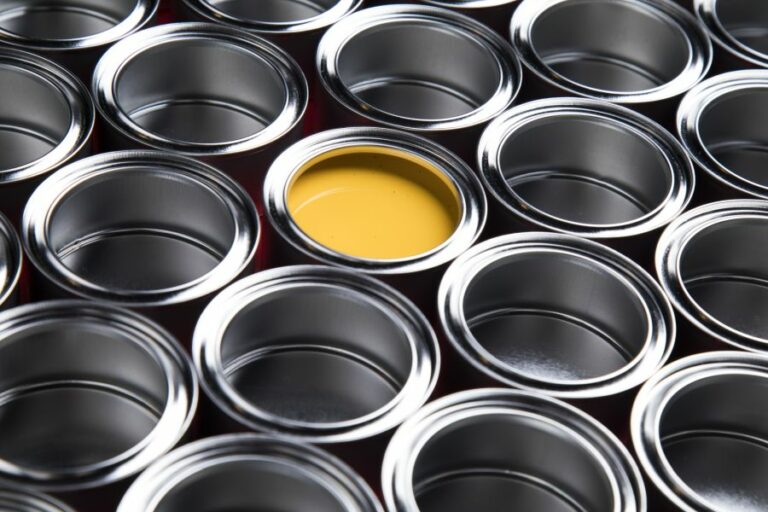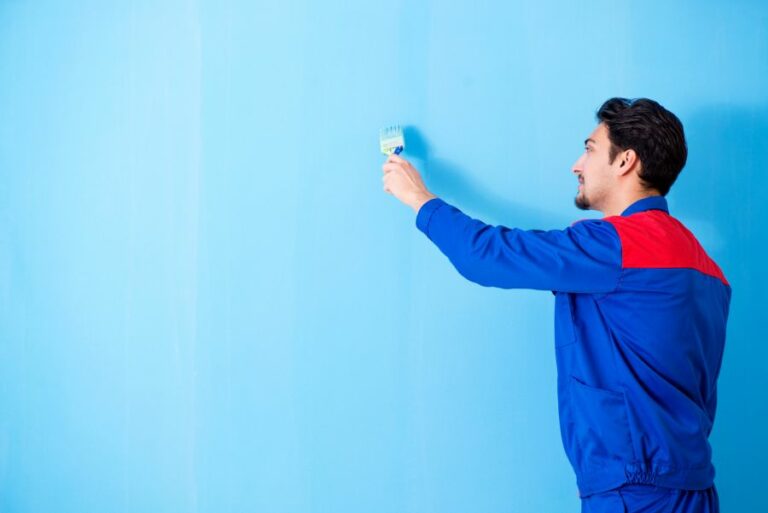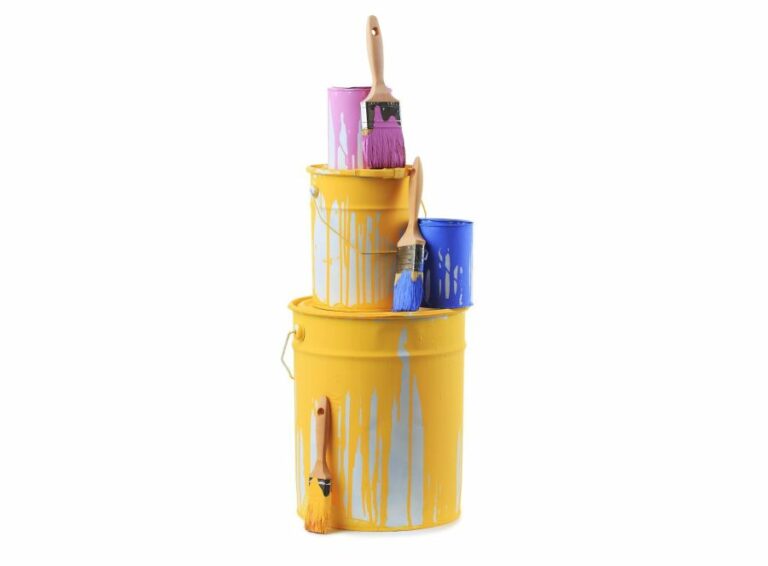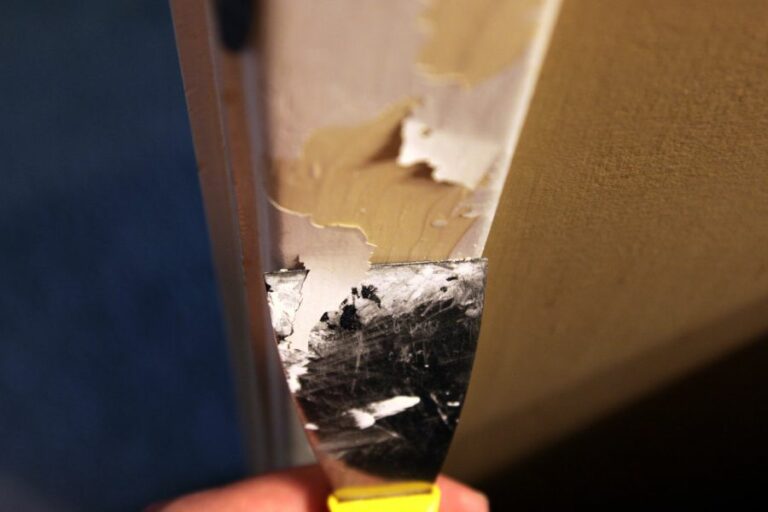Prolong Spray Paint Results, With Pro Maintenance Tips
If you’ve been hoping to prolong the life and vibrancy of your spray paint projects, you’ve come to the right place. Our top maintenance tips will make your spray paint results look fresh and last longer. Not only are these techniques effective, but they’re also easy to implement, meaning your amazing artwork will continue to impress.
Prolong spray paint results:
To prolong spray paint results, follow these top maintenance tips: choose the right spray paint type for your project, ensure proper surface preparation (clean and sand as needed), apply primer if necessary, apply multiple thin coats using correct techniques, keep the nozzle clean, protect and seal your work with a clear sealer, and store cans properly in a cool, dry place with the nozzle facing down.

Unlock the secrets to longer-lasting spray paint results and top maintenance tips! Continue reading and let us show you how to maximize the durability and brilliance of your spray painting projects. Keep your artwork looking fresh for years to come with our expert advice. Read on!
Contents
- 1 Extend Spray Paint Lifespan: Essential Maintenance Advice
- 2 Tips for Achieving Durable Spray Paint Finish
- 3 Maximize Spray Paint Outcomes: Expert Techniques
- 4 Sealing Spray Paint: Effective Top Coat Solutions
- 5 The Importance of Applying a Top Coat on Spray Paint
Extend Spray Paint Lifespan: Essential Maintenance Advice
Spray paint has been a popular choice among DIY enthusiasts, artists, and professionals for years. The convenience, coverage, and variety of colors make it a go-to choice for many projects. However, ensuring a long-lasting and professional finish requires proper maintenance and application techniques.
• Choose the Right Spray Paint
Selecting the appropriate spray paint for your project is crucial. There are various types of spray paints, each designed for a specific surface type and purpose. Using the wrong paint can lead to poor adhesion, premature peeling, and uneven results.
For example, some spray paints specifically adhere to metal, while others are formulated for plastic, wood, or masonry surfaces.
• Proper Surface Preparation
Preparing the surface you plan to paint is essential to ensure a long-lasting result. Start by cleaning the surface thoroughly to remove any dirt, grease, or dust that may interfere with paint adhesion.
You can use a mild detergent solution, followed by a rinse with clean water. Allow the surface to dry completely before proceeding.
Next, consider sanding the surface if it is glossy or uneven. Lightly sanding will help create a rough texture that allows the spray paint to adhere better. Use fine-grit sandpaper and apply gentle pressure to prevent damaging the surface. After sanding, remove any dust or debris with a tack cloth.
• Apply Primer When Needed
Some projects may require a primer before applying spray paint. Primers create a consistent and uniform surface, ensuring better adhesion of the subsequent paint layers. There are spray paint primers specifically designed for various materials, such as metal, plastic, and wood.
In general, a primer may be necessary for surfaces that have not been previously painted, are porous, or show color irregularities. However, most spray paints nowadays have a built-in primer, which can save you time and provide satisfactory results for certain projects.
• Apply Multiple Thin Coats
For best results, apply multiple thin coats of spray paint rather than heavy, thick coats. Thin coats dry more quickly and evenly, which helps to avoid drips, runs, and sags. Keeping the can 6-8 inches from the surface, use a back-and-forth motion parallel to the surface while overlapping your strokes.
Wait about 10-15 minutes between coats to ensure proper drying. The number of coats will depend on the desired coverage and color intensity.
The National Institute for Occupational Safety and Health recommends waiting at least 30 minutes after the last coat has been applied before touching or moving the painted object.
• Keep the Nozzle Clear and Clean
A clean nozzle ensures a consistent spray pattern and prevents clogging, which can lead to uneven coverage and wasted paint.
To keep the nozzle in optimal condition, ensure the can is shaken well before use and store it upside-down when not in use. This will prevent paint from settling in the nozzle and causing clogs.
If the nozzle becomes clogged or dirty, remove it from the can and clean it with a small brush or toothpick before continuing. Be sure to replace the nozzle correctly to avoid any leaks or malfunctions.
• Protect and Seal Your Work
After completing your spray paint project, providing protection with a clear sealer can significantly enhance its longevity. A clear sealer provides a protective barrier against moisture, dirt, and UV rays, reducing the chances of fading, peeling, or chipping.
There are various types of sealers available, such as matte, semi-gloss, and gloss finishes. Be sure to select a sealer compatible with your specific spray paint type and surface material.
Apply the sealer according to the manufacturer’s instructions, usually following the same technique as with spray paint application.
• Proper Storage and Maintenance
Finally, proper storage and maintenance of your spray paint cans will ensure their prolonged effectiveness.
Keep cans in a cool, dry place, away from direct sunlight, and protect them from extreme temperature changes. Always store cans with the nozzle facing down to maintain the nozzle’s cleanliness.
Regularly check your spray paint collection for any leaks or deteriorating cans. If you notice any issues, dispose of the can according to your local waste management guidelines.
With these top maintenance tips, you can achieve beautiful and long-lasting results with your spray paint projects. So, whether you’re creating a work of art, upcycling your furniture, or simply tackling home improvement tasks, follow these recommendations for a professional and durable finish.
Tip | Description |
|---|---|
1. Proper surface preparation | Before painting, make sure the surface is clean, dry, and free of any dirt, dust, or grease. Rough surfaces may require sanding or priming for optimal results. |
2. Shake the can well | Shake the spray paint can vigorously for at least one minute before using and periodically during application to ensure even distribution of the paint. |
3. Use light, even coats | Apply several light coats instead of one heavy coat for the best coverage and to avoid drips and overspray. Allow each coat to dry before applying the next. |
4. Maintain a consistent distance | Maintain a consistent distance of about 10-12 inches between the can and the surface being painted for an even coat and to keep the nozzle from clogging. |
5. Use proper painting technique | Use a side-to-side motion when applying the paint, starting and stopping the spray away from the object being painted for a smooth, even finish. |
6. Protect the nozzle and can | After using the spray paint, clear the nozzle by turning the can upside down and spraying until only clear gas comes out. Store the can in a cool, dry place. |
7. Touch-ups and repairs | If the paint chips or becomes damaged, sand the affected area and reapply the spray paint for a seamless touch-up, following all previous maintenance tips. |
Tips for Achieving Durable Spray Paint Finish
As an experienced painter, it’s crucial to understand the techniques and practices that can make spray paint last longer. This comprehensive guide will provide essential tips and tricks that you can use to ensure the longevity and quality of your spray paint projects.
• Choosing The Right Spray Paint
When selecting spray paint, make sure to choose one that is suitable for your project’s surface. Quality spray paint will have clear indications on the can regarding which materials it is meant for.
A high-quality paint will adhere better, resulting in a longer-lasting finish. Additionally, choosing a well-known and trusted brand will offer better reliability and consistency in the paint’s performance.
• Properly Preparing The Surface
Ensuring the surface is clean and adequately prepared is crucial for making the paint last longer. Follow these steps:
- Cleaning: Remove any dirt, grease, or oil from the surface using soap and water or a specialized cleaner. Wipe down the area with a clean cloth, and ensure it’s completely dry before proceeding.
- Sanding: For smooth surfaces, use fine-grit sandpaper (180 to 220 grit) to lightly sand the surface. This process creates small scratches that help the paint adhere better.
- Priming: Applying a primer is essential for creating a uniform surface and enhancing paint adhesion. There are various primer types available, so make sure to choose a primer suitable for your project’s material. Follow the manufacturer’s guidelines for proper application and drying time.
• Correct Spray Paint Application
Following the correct application technique will significantly impact the durability of the spray paint. Keep these tips in mind:
- Proper Ventilation: Work in a well-ventilated area to ensure the paint dries evenly and quickly.
- Shake Well: Shake the spray paint can for at least one minute before starting to ensure the paint is well mixed.
- Test Spray: Test spray on a scrap piece of material or cardboard to ensure the nozzle is functioning correctly and you’re happy with the spray pattern.
- Apply Thin Coats: Begin by applying a light coat of paint from a distance of 10 to 12 inches away from the surface. Avoid applying a thick coat, as it increases the risk of drips and uneven coverage.
- Multiple Coats: Allow each coat to dry according to the manufacturer’s instructions before applying the next one. Typically, two to three thin coats provide sufficient coverage and durability.
- Smooth, Even Motion: Spray with a consistent motion, starting and ending beyond the edges of the surface. This practice helps to prevent paint buildup at the beginning and end of each stroke.
• Protecting The Painted Surface
- Curing Time: Allow adequate time for the paint to cure completely. This process may take several days or even weeks, depending on the paint and environmental conditions. Avoid touching or handling the painted item during this time.
- Apply Sealant: Depending on your project, you may want to apply a clear sealant or topcoat to protect the painted surface further. These protective layers can help defend against scratches, UV exposure, and weather-related damage for outdoor projects. Make sure to choose a compatible sealant with your spray paint.
- Proper Maintenance: Regularly clean the painted surface to keep it free of dirt and grime that can damage the paint over time. A gentle wipe-down with a soft cloth and mild soap can go a long way in maintaining your painted items.
• Storing Spray Paint Cans Properly
Properly storing your spray paint cans will ensure their longevity for future projects:
- Temperature Control: Store spray paint cans in a cool, dry environment with a temperature range of 60 to 80 degrees Fahrenheit. Avoid extreme temperature fluctuations, as they can damage the paint and canister.
- Upright Storage: Keep cans in an upright position to prevent leakage and maintain pressure consistency within the can.
- Nozzle Care: Clear the nozzle after each use by turning the can upside down and spraying until only clear gas is released. This action will prevent clogging and maintain the spray pattern for future use.
With these expert tips and recommendations, you can confidently approach your spray paint projects with the knowledge and techniques needed to make your spray paint last as long as possible.
By carefully choosing your materials, preparing surfaces, applying paint correctly, and investing time and effort into proper maintenance, your spray-painted items will remain vibrant and durable for years to come.
Step | Description |
|---|---|
1 | Shake the spray paint can well before use to mix the paint and propellant evenly. |
2 | Apply thin, even coats of spray paint, allowing each coat to dry before applying the next. |
3 | Hold the spray paint can approximately 10-12 inches away from the surface to prevent drips and uneven coverage. |
4 | Protect the painted surface with a clear coat or sealant to prevent chipping, fading, or other damage. |
5 | Store unused spray paint cans in a cool, dry place away from direct sunlight and extreme temperatures to preserve the paint’s quality. |
6 | Clean the spray paint nozzle after each use by turning the can upside down and spraying until only clear gas is released. This prevents clogs and ensures a smooth spray the next time. |
Maximize Spray Paint Outcomes: Expert Techniques
Spray paint is a versatile and easy-to-use medium for adding color and personality to a wide range of surfaces. However, achieving the best results requires proper technique and consideration of various factors.
• Choose the Right Spray Paint
Selecting the appropriate spray paint for your project is crucial to achieving optimal results. Spray paints come in various types, each designed for specific materials and finishes.
For example, enamel spray paints offer a glossy finish and have excellent adhesion to metal surfaces, while acrylic spray paints are water-based, making them ideal for indoor and outdoor use on various materials, such as wood or plastic.
It is recommended to read the label on the spray paint can to confirm the paint’s compatibility with your intended surface. You can also consult informative resources on spray paint types, such as this guidance provided by Colorado State University.
• Prepare Your Surface
Proper surface preparation is crucial for ensuring a smooth and long-lasting finish. Follow these steps to prepare your surface for spray painting:
- Clean the surface: Remove any dirt, grease, or other contaminants from the surface using a mild detergent and water. Ensure that the surface is completely dry before proceeding.
- Sand the surface: Lightly sand the surface using fine-grit sandpaper (220- to 320-grit) for a smoother finish. Sanding creates a slightly rough texture, enhancing the paint’s adherence to the surface.
- Prime the surface: Applying a primer will improve the paint’s adhesion, ensure even coverage, and contribute to a more durable finish. Choose a primer compatible with your spray paint and intended surface.
• Ensure Proper Ventilation and Safety
Working in a well-ventilated area is essential to minimize the inhalation of paint fumes and airborne particles.
It’s recommended to spray paint outdoors or in a dedicated spray booth if possible. If working indoors, make sure the area is well-ventilated by opening doors and windows and using fans for air circulation.
Remember to use protective gear, such as a respiratory mask (preferably one designed for paint fumes), safety glasses, and gloves to protect your lungs, eyes, and skin.
• Test Your Spray Paint Before Applying
Before starting your project, test your spray paint on a scrap piece of material or cardboard. This will help you familiarize yourself with the spray pattern, pressure, and optimal spraying distance for your specific spray paint.
Typically, a distance of 10 to 12 inches from the surface is recommended, but this may vary depending on the spray paint brand and nozzle.
• Apply Thin and Even Coats
When spray painting, apply thin and even coats to avoid drips and runs in the paint. Hold the spray can at a consistent distance from the surface and use a steady back-and-forth motion, slightly overlapping each pass. Remember to release the spray nozzle at the end of each stroke to prevent paint buildup.
Allow the paint to dry between coats, as indicated on the spray paint can’s label. Depending on the paint type and environmental factors, drying times may vary. To achieve optimal coverage and a smooth finish, it’s often necessary to apply multiple coats of paint.
• Finish with a Protective Clear Coat
After your final coat of spray paint has dried, consider applying a clear coat to protect your project and enhance its durability. Clear coats are available in various sheens, such as matte, satin, and gloss, allowing you to achieve your desired final appearance.
When applying a clear coat, follow the same spraying techniques discussed above, ensuring that you maintain a consistent distance, apply thin coats, and allow the clear coat to dry between layers. Be sure to read the label on the clear coat can for proper drying times and application recommendations.
• Store and Dispose of Spray Paint Responsibly
Proper storage and disposal of spray paint cans are essential for both safety and environmental reasons. Store your spray paint cans in a cool, dry place, away from direct sunlight and heat sources. Keep them out of reach of children and pets.
To dispose of empty or unwanted spray paint cans, consult your local waste disposal guidelines or recycling center, as regulations may vary by region. You can also seek guidance from resources like the United States Environmental Protection Agency for responsible disposal practices.
By following these expert tips and recommendations, you can achieve professional-quality results in your spray paint projects. Practice patience, proper technique, and attention to detail to maximize your spray paint’s potential and bring your creative visions to life.
Step | Description |
|---|---|
1. Choose the right paint | Select a spray paint that is suitable for the material you are painting on, such as metal, wood, or plastic. |
2. Prepare the surface | Before spraying, clean and dry the surface thoroughly. Remove any dirt, rust, or peeling paint, and sand the surface for a smooth finish. |
3. Protect surrounding areas | Use newspaper, drop cloths, or masking tape to cover the areas around the item you’re painting to prevent accidental overspray. |
4. Shake the can well | Shake the spray paint can for at least one minute before using it to mix the paint properly and get a consistent color. |
5. Test spray | Before applying the paint on the actual surface, test spray on a scrap piece of material or cardboard to check the color and consistency. |
6. Apply multiple thin coats | Instead of applying a thick layer of paint, use multiple thin coats with a 10-15 minute drying time between each coat. This helps ensure an even finish and prevents dripping or running paint. |
7. Hold the can properly | Keep the can 8-12 inches away from the surface and move in a consistent, sweeping motion to apply the paint evenly. |
8. Let it dry | Allow the final coat to dry completely, following the recommended drying time on the paint can, before handling or using the painted item. |
Sealing Spray Paint: Effective Top Coat Solutions
Spray paint can be an excellent medium for adding color and personalizing various surfaces, but to ensure that your artwork lasts, you must apply a sealant.
• Why Use a Sealant on Top of Spray Paint?
Sealing spray paint provides several benefits, including:
- Protection: A sealant forms a protective barrier to prevent damage to your paintwork from UV rays, water, or physical contact. This protects your surface and keeps your artwork looking fresh.
- Increased durability: Properly sealed spray paint will last longer as it becomes more resistant to external factors like weather and wear.
- Improved appearance: A well-applied sealant can provide a professional finish by reducing glare, enhancing the color, and adding a subtle shine to your project.
• Types of Sealants for Spray Paint
– Varnish
Varnish is a popular sealant for spray paint as it’s available in various finishes, such as matte, satin, or gloss. It provides a durable layer that enhances the paint’s appearance and protects it from damage.
To learn more about the different varnishes and their applications, the Golden Artist Colors website provides valuable information on choosing the right varnish for your needs.
Recommended Varnish Sealants for Spray Painted Surfaces:
- Krylon Clear Coatings: These varnishes are specifically designed for spray paint and come in various finishes, they are easy to apply and fast-drying.
- Rust-Oleum Painter’s Touch Clear: This multi-purpose varnish is suitable for indoor and outdoor surfaces, providing maximum durability and a smooth finish.
– Polyurethane
Polyurethane is a highly durable sealant that’s resistant to water, abrasion, and UV rays. It’s available in water-based and oil-based formulas and typically comes in satin, semi-gloss, and gloss finishes. Polyurethane sealants are suitable for various surfaces, including wood, metal, and plastics.
Recommended Polyurethane Sealants for Spray Painted Surfaces:
- Minwax Polycrylic Protective Finish: This water-based polyurethane sealant is easy to apply, offering a crystal-clear finish and excellent durability.
- Varathane Ultimate Polyurethane: This oil-based polyurethane sealant is formulated to provide maximum scratch and stain resistance, ensuring a long-lasting finish.
– Acrylic Sealer
Acrylic sealers are water-based, making them an eco-friendly option for sealing spray paint. They dry quickly and provide a semi-gloss or matte finish, making them ideal for various applications, including crafts and home decor projects.
Recommended Acrylic Sealers for Spray Painted Surfaces:
- Aleene’s Acrylic Sealer Spray: This acrylic sealer is available in gloss and matte finishes, offering a versatile option for sealing various surfaces.
- Mod Podge Clear Acrylic Sealer: This popular sealant provides a cling-free coating that’s ideal for protecting delicate surfaces and projects.
• Choosing the Right Sealant for Your Surface
Each sealant has its unique properties, making it essential to choose the right one for your specific surface. Here are some factors to consider when selecting a sealant:
- Surface Material: Certain sealants work better on specific materials. For example, polyurethane is better suited for wood surfaces, while acrylic sealers work well on porous surfaces like fabric.
- Finish: Determine the desired finish (matte, satin, semi-gloss, or gloss) for your project and choose a sealant accordingly.
- Durability: Consider whether your project will be exposed to adverse conditions or heavy wear; in such cases, choose a more durable sealant like polyurethane.
- Application: Ensure that the sealant you choose is easy to apply and compatible with the type of spray paint used.
• Tips for Applying Sealant on Spray Paint
Now that you’ve chosen the right sealant for your project, follow these expert tips to ensure a successful application:
- Allow the paint to dry completely: Wait for the spray paint to dry thoroughly before applying any sealant to avoid smudging or ruining your work.
- Sand your surface: Lightly sand your surface with fine-grit sandpaper to remove any imperfections or rough spots that could negatively impact the sealant’s finish.
- Clean the surface: Wipe off any dust or debris with a damp cloth before applying the sealant to ensure proper adhesion.
- Apply in thin coats: Apply the sealant in thin, even coats to avoid drips and runs. Allow each coat to dry before applying additional layers.
- Follow instructions: Read the manufacturer’s instructions carefully to determine drying times, the number of coats required, and any additional application tips.
By selecting the correct sealant and following the application tips provided, you’ll protect and enhance your spray paint projects, ensuring a professional and lasting result.
Sealant Type | Description | Usage |
|---|---|---|
Clear Acrylic Sealer | A water-based, non-toxic sealant that provides a protective layer over spray paint. | Use on various surfaces such as wood, metal, and plastic to protect from moisture and scratching. |
Polyurethane Sealer | A durable sealant that creates a hard, glossy, or satin finish over spray paint. | Great for interior and exterior surfaces, adding extra durability and protecting against weather and wear. |
Varnish | A transparent, hard, protective finish used to seal spray paint and protect surfaces. | Commonly used for paintings, wood projects, and other artistic creations to add an additional layer of protection. |
Wax | A natural or synthetic sealant that provides a layer of protection and enhances the appearance of spray paint. | Best for creating a matte finish on surfaces like furniture, sculptures, or other home decor projects. |
Enamel Sealer | A tough, solvent-based sealant that provides a durable, glossy finish on spray paint projects. | Ideal for automotive projects, outdoor signs, and other heavy-duty applications where a tough, long-lasting finish is needed. |
The Importance of Applying a Top Coat on Spray Paint
Spray paint is a convenient and efficient way to quickly transform the look of an object or surface. However, many people wonder if it’s necessary to add a topcoat to their spray-painted projects.
• The Importance of a Topcoat
A topcoat is a clear protective layer that is applied over the finished paint. It provides several benefits, including:
– Durability
A topcoat adds a level of protection to the paint, making it more resistant to scratches, chips, and wear. This is especially important for items that will be handled frequently or exposed to harsh weather conditions.
– UV Protection
Many topcoats contain UV inhibitors, which help protect the color from fading due to exposure to sunlight. This is especially important for outdoor items, as constant sun exposure can cause the color to fade quickly.
– Gloss and Sheen
Applying a topcoat can add a desired gloss or sheen to your project, enhancing the final appearance. Topcoats come in a variety of finishes, such as matte, satin, or high-gloss, allowing you to choose the best option for your project.
– Water and Stain Resistance
A topcoat also adds a layer of water and stain resistance to the painted surface. This is especially important for surfaces that may be exposed to moisture, such as outdoor furniture or bathroom fixtures.
• When to Apply a Topcoat
While there may be some situations where a topcoat isn’t necessary, it’s generally recommended to use one in the following circumstances:
– High-Traffic Items
For items that will be handled frequently or are located in high-traffic areas, a topcoat is crucial for protecting the paint from wear and tear. Examples include doorknobs, light switches, and railings.
– Outdoor Projects
Exposure to the elements can quickly deteriorate the paint on outdoor items. Applying a topcoat with UV protection can help prevent fading and extend the life of the paint.
– Surfaces Exposed to Moisture or Chemicals
Items that may come into contact with moisture, chemicals, or other corrosive substances, such as bathroom fixtures or kitchen appliances, can benefit from the added protection of a topcoat.
– When a Specific Finish is Desired
If you want a particular gloss or sheen for your project, applying a topcoat is the best way to achieve the desired finish.
• How to Apply a Topcoat
When applying a topcoat, follow these steps to ensure a smooth and even finish:
1. Allow the Paint to Dry
Before applying a topcoat, ensure that the spray paint has fully dried. This may take anywhere from a few hours to a full day, depending on the paint being used.
2. Clean the Surface
Before applying the topcoat, wipe down the surface to remove any dust or debris. Any residue left on the surface may cause imperfections in the topcoat.
3. Select the Appropriate Topcoat
Choose a topcoat that is compatible with your spray paint and desired finish.
4. Apply the Topcoat
Using even, sweeping motions, apply the topcoat in thin, uniform layers. It’s essential to maintain a consistent distance from the surface and avoid overspray, which can lead to drips and an uneven finish.
5. Allow the Topcoat to Dry
After applying the topcoat, wait the recommended amount of time for the product to fully dry before handling or exposing the item to any stress.
• Conclusion
Should you topcoat spray paint? The answer is most often yes. Using a topcoat will provide your project with increased durability, UV protection, and a consistent finish. It’s particularly important for high-traffic items, outdoor projects, and surfaces exposed to moisture or chemicals.
By following the proper steps and selecting the appropriate topcoat, you can significantly improve the lifespan and appearance of your spray-painted projects.
For further information on spray-painting techniques and topcoat application, you can visit the U.S. Environmental Protection Agency website to learn about best practices and safety precautions.







